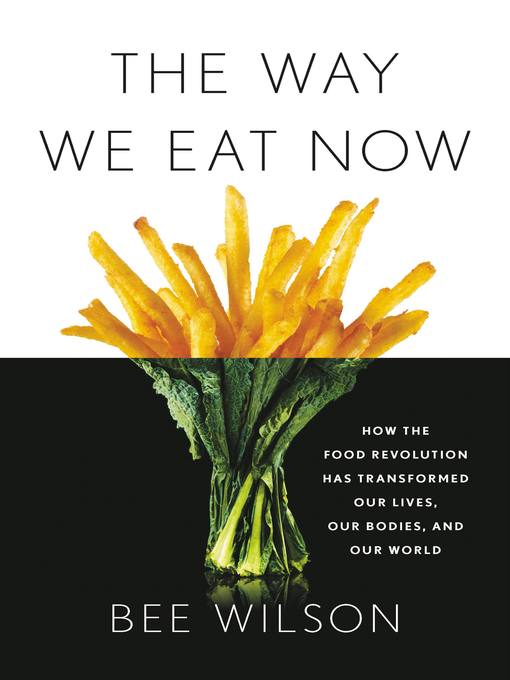
The Way We Eat Now
How the Food Revolution Has Transformed Our Lives, Our Bodies, and Our World
چگونه انقلاب غذا زندگی ما، اجساد ما و جهان ما را دگرگون کردهاست؟
کتاب های مرتبط
- اطلاعات
- نقد و بررسی
- دیدگاه کاربران
نقد و بررسی

April 1, 2019
A wide-ranging look at how food today is killing us through its abundance. British food historian Wilson (First Bite: How We Learn to Eat, 2015, etc.), who writes a monthly column on food for the Wall Street Journal and has been named BBC Radio's food writer of the year, avers that diets are getting worse across most of the world. "We snack more, we eat out more, and yet we often enjoy food less," she writes. In her view, we are in the fourth stage of diet transitions, following the low-fat one of prehistoric hunter-gatherers to the cereal-rich one of the agricultural revolution to the third healthier, more varied one that followed. In stage four, diets are getting sweeter, fatter, and meatier--and not just in the rich countries. The author has talked to researchers, economists, and other experts, gathering data from around the world. Happily, she presents the data in an appealing, informal, almost chatty fashion. If readers want to know more about, say, the decline in cooking oil prices in China or the rising cost of green vegetables relative to ice cream in the U.K., a few charts provide this information. More interesting is Wilson's discussion of trendy foods, where she exposes frauds and fads; she gives close attention to such foods as quinoa, yogurt, skyr, kale, pomegranate juice, and coconut water. The author also explores the dilemma of eating out versus cooking at home and examines the rise in popularity of meal kits, which provide customers with all the ingredients and instructions for making a home-cooked meal. She optimistically predicts that we may be entering another dietary transition to healthier foods, and she offers tips for enjoying our food while waiting for this new food culture to emerge. Though Wilson offers an enjoyable reading experience, her failure to consider potential future food shortages as climate change reduces arable land and the population grows makes some of her predictions questionable. Though not a complete picture, this book is an entertaining choice for naturalists, foodies, and health-conscious readers.
COPYRIGHT(2019) Kirkus Reviews, ALL RIGHTS RESERVED.

June 1, 2019
English food writer and historian Wilson explores the evolution of food and changing tastes around the world. This latest work, after First Bite and Consider the Fork, shares research and insight on the transformation of global cuisine and eating habits in recent decades, from sustainability to satisfying cravings. While our tongues may drive our food tastes and preferences, Wilson considers all of the other determining factors of what ends up on our plates, including corporations and economics (or what's profitable for us to consume), busy schedules that have eliminated the time to cook, and diets and fads. The author delves into the reasoning why both food insecurity and obesity are co-occurring and epidemic, and her research includes trends currently driving Western diets, including keto/paleo, fasting, and orthorexia (the trend of "clean eating" to a disordered level). Occasionally, the chapters are tangential in an attempt to include the most information possible, much like an overfilled buffet plate. However, the research is solid and readers will come away with a new understanding of what we eat and why. VERDICT Much more than another culinary history, this is a fascinating read for both foodies and sociologists alike.--Jennifer Clifton, Indiana State Lib., Indianapolis
Copyright 2019 Library Journal, LLC Used with permission.

Starred review from March 15, 2019
This compelling overview of global eating habits by acclaimed food writer and Wall Street Journal columnist Wilson (Consider the Fork, 2012) seesaws back and forth between alarming paradoxes. We eat to live, but what we eat is killing us. Food is often readily available (and sometimes even hard to escape), but overly processed fast food contains few nutrients, resulting in simultaneously malnourished and obese populations. And so it goes, as Wilson's entertaining text compares how humans used to eat?before mass consumerism, when considerable time was devoted to preparing and enjoying meals?with how we eat now, when food choices, dining styles, and meal times have become so markedly individualized. After about 200 pages of delivering dining angst, the book starts offering hopeful and helpful alternatives. Scale back portions, reform school lunches, elevate and celebrate the art of cooking, enact legislation against sugary drinks and junk food, and increase global consumption of vegetables. The epilogue offers even more focused advice: ditch plastic and Styrofoam in favor of ceramic and glass, drink plain water, skip the snacks, think about what you're putting in your mouth, and slow down. Wilson's many fans and new converts alike will find her arguments convincing. This diet advice goes down easy.(Reprinted with permission of Booklist, copyright 2019, American Library Association.)

























دیدگاه کاربران